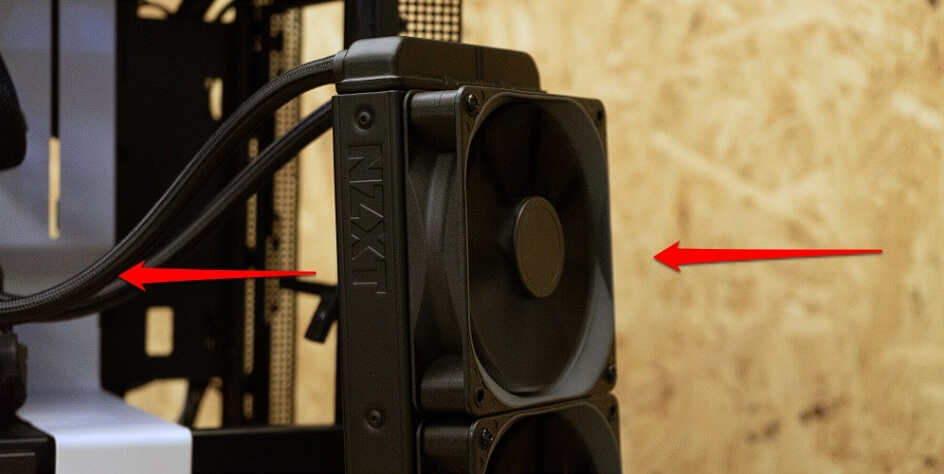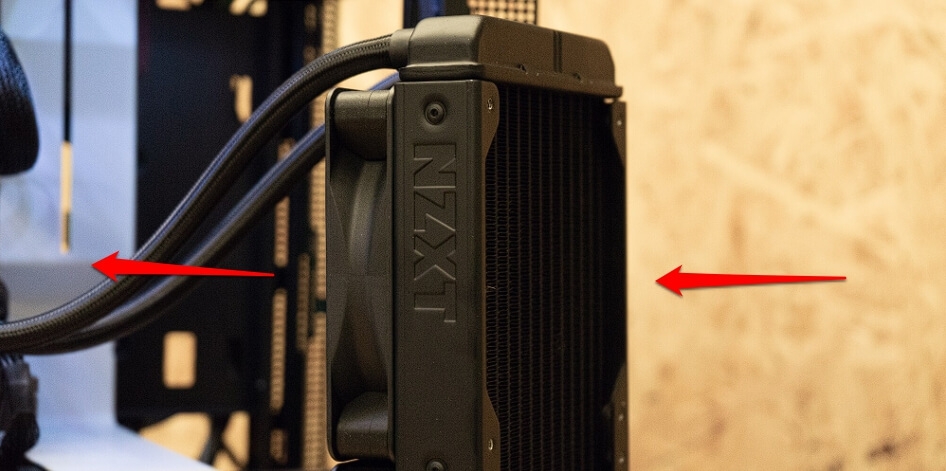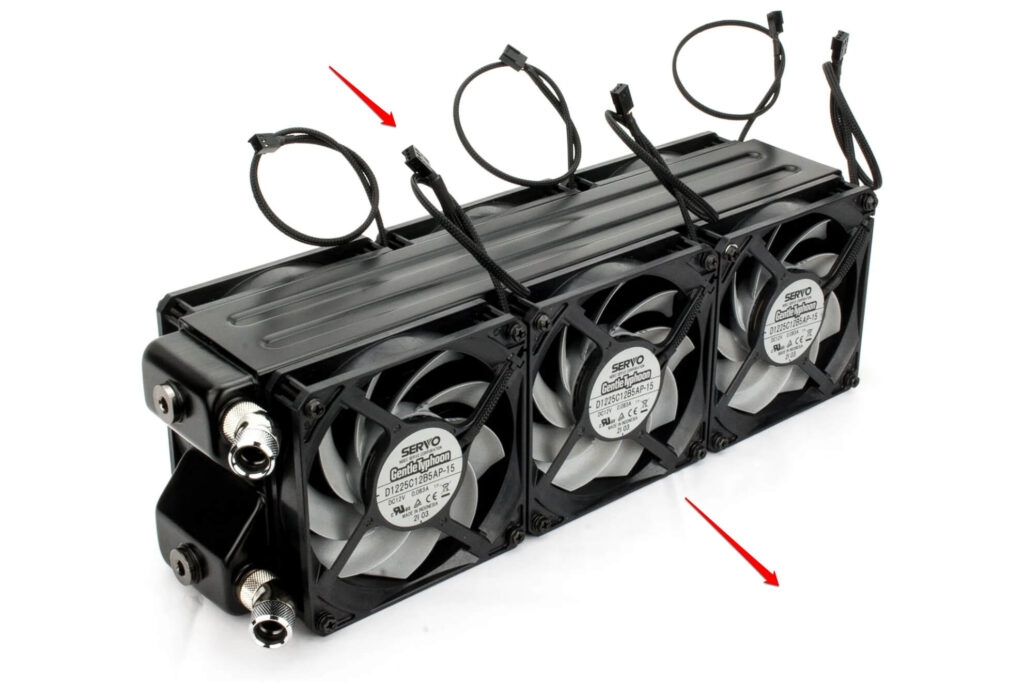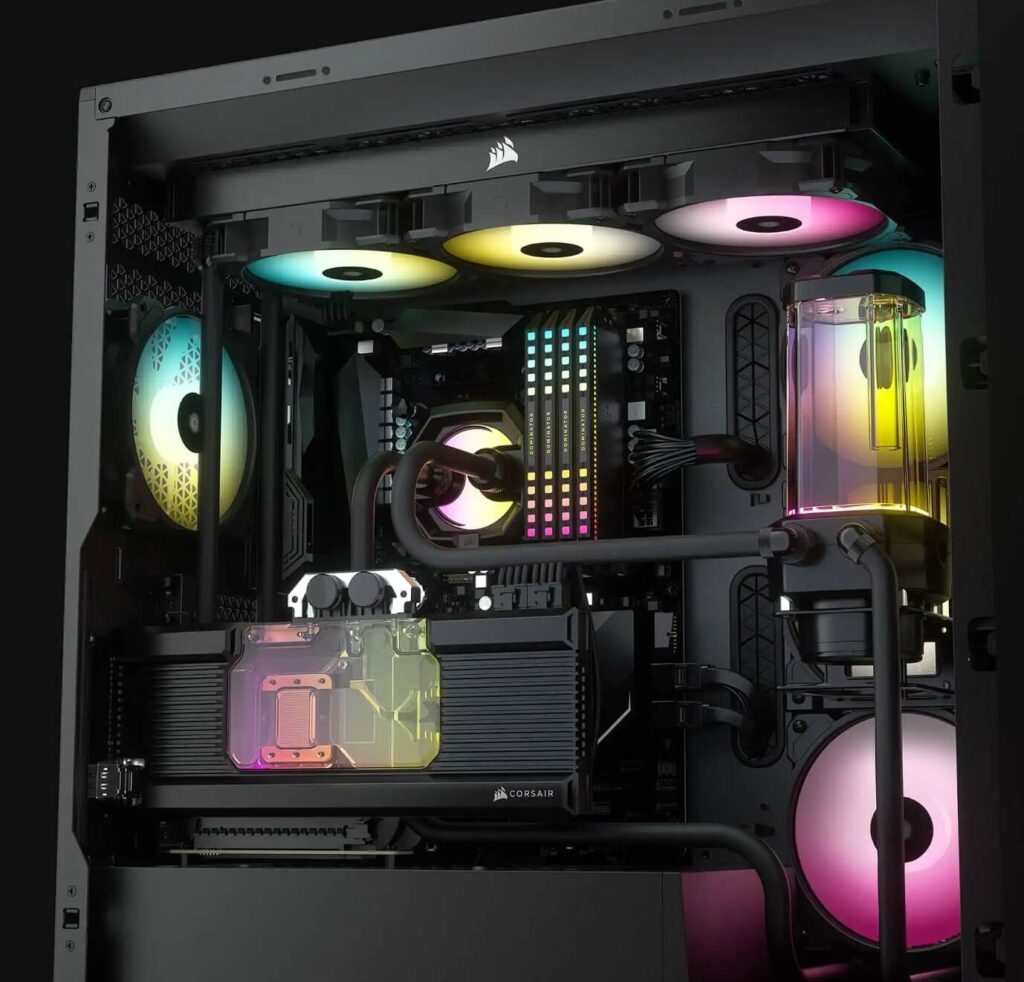Radiators can be designed with different airflow configurations, including push, pull, and push-pull. This article will discuss each configuration’s advantages and disadvantages and help you decide which is best for your needs.
Radiator Push vs. Pull vs. Push-Pull, What are the main Differences?
Push Configuration
Push configuration is when the fans on the radiator push air through the radiator and out the other side. This configuration is commonly used in computers. The fans are usually placed on the front of the radiator and push air through the fins, which helps dissipate heat. This configuration is simple and easy to install.
Advantages of Push Radiator
One of the main advantages of a push configuration is that it is more efficient at removing heat from the system. This is because the fans are pushing air directly through the radiator fins, which means the air is passing over more surface area. This results in more efficient cooling and can lead to lower temperatures in the system. Another advantage of a push configuration is that it is quieter than a pull configuration. This is because the fans are pushing air through the radiator, which means that the noise from the fans is directed away from the user. This makes it a great option for computers used in quiet environments, such as home offices or bedrooms.
A Disadvantage of Push Radiator
However, one disadvantage of a push configuration is that it can be more difficult to clean. This is because the fans are located on the front of the radiator, which means that the dust and debris accumulating on the radiator fins can be difficult to remove. Over time, this can lead to decreased efficiency, as the radiator becomes clogged with debris.
Pull Configuration
A pull configuration is when the fans on the radiator pull air through the radiator and out the other side. This configuration is less common than a push configuration, but it is still used in some computers. The fans are usually placed on the back of the radiator and pull air through the fins.
Advantages of a Pull Radiator
One advantage of a pull configuration is that it is easier to clean than a push configuration. This is because the fans are located on the back of the radiator, so the dust and debris accumulating on the radiator fins can be easily removed. This can help to maintain the efficiency of the cooling system over time. Another advantage of a pull configuration is that it can more effectively cool certain types of systems. This is because the fans pull air through the radiator, which means the air is passing over the hottest part of the system first. This can lead to more efficient cooling in some cases.
A Disadvantage of Pull Radiator
However, one disadvantage of a pull configuration is that it can be louder than a push configuration. This is because the fans are located on the back of the radiator, which means that the noise from the fans is directed toward the user. This can be a problem in environments where noise is a concern, such as home offices or bedrooms.
Push-Pull Configuration
A push-pull configuration is when both push and pull fans are used on the same radiator. This configuration is often used in high-performance cooling systems, such as those found in gaming computers. The fans are placed on both the front and back of the radiator, with one set of fans pushing air through the radiator and another pulling air through the radiator.
Advantages of a Push-Pull Radiator
One advantage of a push-pull configuration is that it combines the advantages of both push and pull configurations. This means it is efficient at removing heat from the system and easy to clean. It is also quieter than a pull configuration because the noise from the fans is directed away from the user. Another advantage of a push-pull configuration is that it can more effectively cool high-performance systems. This is because the fans are working together to move air through the radiator, so more air is passing over the radiator fins. This can lead to better cooling performance, especially in high-performance systems that generate heat.
Disadvantages of a Push-Pull radiator
However, one disadvantage of a push-pull configuration is that it can be more complex to install. This is because it requires both push and pull fans to be installed on the radiator, which can be more difficult to set up than a single fan configuration. It may also require more space to accommodate the extra fans. Another disadvantage of a push-pull configuration is that it can be more expensive than a single-fan configuration. This is because it requires two sets of fans to be installed, which can add to the cost of the cooling system.
Price Differences
The cost difference between push-pull, push and pull configurations for radiators depends on various factors, such as the type and quality of fans and the radiator’s size. Generally, push-pull configurations are more expensive than push-and-pull configurations because they require twice as many fans and additional hardware to mount the fans on both sides of the radiator. The cost of fans can vary widely depending on their size, speed, noise level, and other features. High-end fans can cost $20 to $40 each or more, while cheaper fans can cost as little as $5 to $10 each. The quality of the fans can also affect the cooling performance, noise level, and durability, which can impact the overall cost. The cost of the radiator itself can also vary depending on its size, materials, and quality. Larger radiators generally cost more than smaller ones, and radiators made of higher-quality materials, such as copper, can cost more than aluminum ones. High-end radiators can cost $100 or more, while cheaper ones can cost as little as $30 to $50 Regarding additional hardware, push-pull configurations require additional mounting brackets or screws to attach the fans to both sides of the radiator. These mounting options can range from simple plastic clips to more sophisticated metal brackets, adding to the overall cost. Overall, the cost difference between push-pull and pull configurations for radiators can vary widely depending on the specific components used. However, as a general rule, push-pull configurations are more expensive than push-and-pull configurations due to the additional fans and mounting hardware required. The added cost may be worth it for those seeking the highest cooling performance, especially for high-performance gaming or overclocking setups. However, a push configuration may be sufficient and more cost-effective for more modest systems.
Ease of Installation
The ease of installation for each configuration depends on the case and the components you’re using. A push configuration is typically easier to install because it involves fewer fans and less wiring. You’ll simply need to mount one or two fans at the rear or top of the case and connect them to the appropriate headers on your motherboard. A pull configuration is a bit more involved because you’ll need to mount one or two fans at the front or bottom of the case and connect them to the appropriate headers on your motherboard. You may also need to remove any obstacles in the way of the airflow, such as hard drive cages or unused bays. A push-pull configuration is the most complex to install because it involves both push and pull fans, which can require more wiring and additional mounts. However, this configuration can offer the best airflow and cooling performance, particularly for high-end or overclocked systems. In summary, while the ease of installation can vary based on your specific components and case, a push configuration is generally the easiest to install, followed by a pull configuration. A push-pull configuration is the most complex to install but can provide the best cooling performance.
Choosing the Right Configuration
When choosing a radiator configuration, it is important to consider the specific requirements of your system. Factors such as the amount of heat generated by the system, the available space for installation, and the system’s noise level should all be considered. A push configuration may be the best option if you are looking for a simple and efficient solution. A pull configuration may be the best choice if you need a quieter solution. A push-pull configuration may provide the best combination of efficiency and performance for high-performance systems. It is also important to consider the fans’ quality in the cooling system. High-quality fans can make a significant difference in the performance and efficiency of the cooling system. Look for fans with high airflow and low noise levels for the best results.
Table of Differences Between Push, Pull, and Push-Pull Configuration
Wrapping it All
In summary, radiators are an essential component of any cooling system, and there are three main configurations to choose from: push, pull, and push-pull. Each configuration has advantages and disadvantages, and the right choice depends on the system’s requirements. A push configuration is more efficient and quieter but can be more difficult to clean. A pull configuration is easier to clean and can be more effective for certain systems, but can be louder. A push-pull configuration combines the advantages of both push and pull configurations but can be more complex and expensive to install. By considering the specific needs of your system and choosing the right radiator configuration and fans, you can ensure efficient and effective cooling for your computer. Further Reading:
RTX 4070 Ti vs. RTX 3080: Is it an Upgrade or Downgrade? RTX 4070 Ti vs. RX 7900 XT – Which is Right for you? AMD Ryzen 9 7950X3D vs. Intel Core i9-13900K – The Best Desktop Processor



